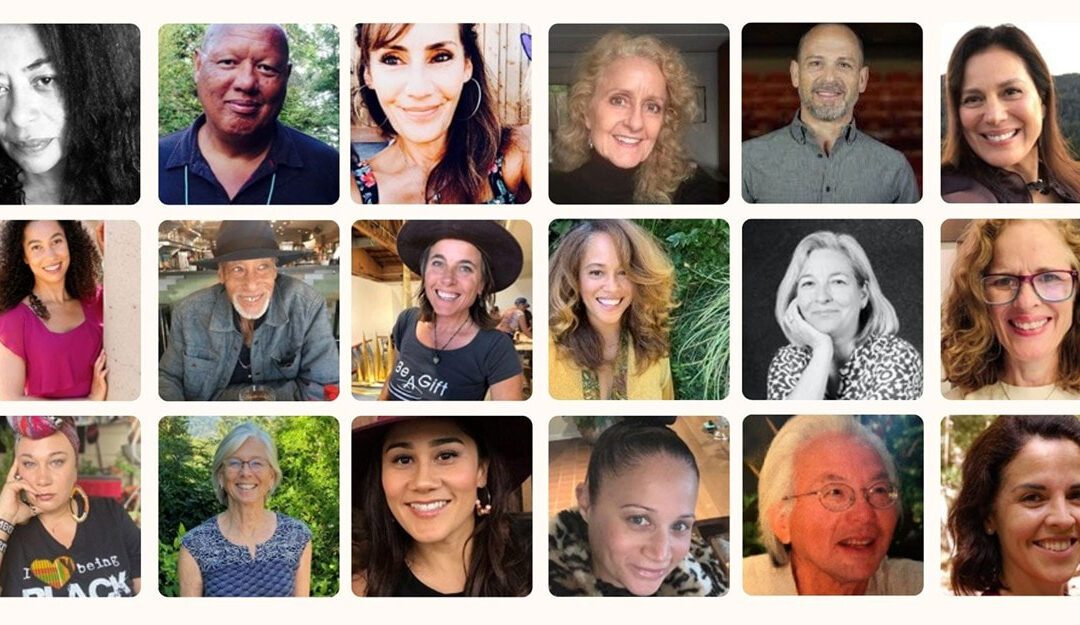That group unveiled its full report and recommendations Monday evening in the form of a 93-page, 28-recommendation, multiple ”wow”-inducing document that spanned affordable housing, cultural and recreational engagement, economic opportunity, education and policing, the latter of which was the focus of 13 of the 28 recommendations.
The report kicks off with a “roadmap for our common journey to transform our small community into a model of universal welcome and inclusion; encourage and support the individual and collective potential of all our residents; and honor and celebrate diversity in all its forms as a catalyst for creativity, innovation and community enrichment. Vice Mayor John McCauley called the statement “a wonderful day to start your document.”
Dean called the feverish pace of the work to build a massive list of detailed recommendations in less than two months by 22 people, many of whom had never met one another before, “a beautiful struggle … We just volunteered to fix something that needed to be fixed in this city.”
Community members and City councilmembers overwhelmingly praised the task force’s work, with several council members vowing to maintain the momentum. “The report was excellent, and probably a long time coming to Mill Valley,” Councilman Jim Wickham said.
“We’re not going to shelve this – that’s not going to happen,” Councilmember Tricia Ossa said. “We are dedicated to making sure this moves forward.”
Local resident Veronica Wilson saying, “Wow, wow, wow. I am just so blown away and so impressed by the work of the DEI Task Force – it’s really astounding. I am feeling proud to be a Mill Valley resident because of my neighbors and my fellow community members. I just cannot express my gratitude enough. We couldn’t collectively ask for a better blueprint for getting down to doing this work.”
Joel Yanowitz told the Council that the task force’s work made him feel great “about being part of a town that would commit to this.” He urged the Council to move forward “very carefully and deliberately – people with power and privilege don’t give it up easily.”
Fairfax City Councilmember Stephanie Hellman, a co-chair of her town’s DEI committee, told the group she was “really blown away” by the report. “While there is some low-hanging fruit, there is not a quick fix here.” Hellman urged the Council to set up the commission and identify ways for neighboring communities “to share learnings and work together.
Police
“I’m very gratified to see that the police department was the bulk of your report,” Councilmember Urban Carmel said, pointing to evaluations around the department’s head count, transparency and budget, among others, and the need to identify similarly-sized cities from which to glean best practices. “That makes sense, as this all started with people like George Floyd and the appropriate outrage that resulted from it.”
He also noted that the City needed to tread carefully with reform, as some municipalities like Minneapolis, which shelved a bold proposal that would have allowed the city council to replace the police department with a community safety department, among other significant reforms. The city where George Floyd was killed has instead seen “the tragic momentum for change in that moment fizzle into frustration,” according to the Minneapolis Star-Tribune.
What’s Next
First is the task force’s call for the immediate formation of a standing DEI commission built in the mode of the city’s subject-specific panels like the Bicycle Pedestrian Advisory Committee (BPAC) and Emergency Preparedness Commission.
“It all probably feels a little overwhelming but we are not asking for the City Council to do it themselves,” said task force member Tammy Edmondson, a 51-year resident of Mill Valley, who called the task force’s work a rare moment of “profound opportunity,” and urged the council to back the two immediate requests. “Commissions in Mill Valley have proven to be highly effective, and the issue of racial justice is certainly no less important than (the subjects of other city commissions). Our children and grandchildren may look back in pride at this moment.”
Task force member Celimine Pastor called on the council to support their second immediate ask: the development of a comprehensive racial equity plan “to empower the city to implement racial equity best practices. “These recommendations are not radical,” Pastor added. “They represent best practices that cities have made across the country to address racial inequity … Issues of racial bias cannot cure themselves with just good intentions.”
In first creating the task force, the Council stepped away from its usual process for “City-appointed advisory bodies,” allowing the task force to work independent from City staff and councilmembers and formulate its recommendations without City oversight.
The Council unanimously agreed Monday, however, to return to a more traditional government process going forward, directing City Manager Alan Piombo to dole out the subject-specific next steps to the relevant city department to study the potential impact of the recommendations in terms of “feasibility, financial impacts, phasing, and/or implementation.”
McCauley said it was “too early” for the establishment of a permanent commission. “I want to take action,” he said. “We have a lot of people who dedicated their time to this, and if our staff works with them and has specific measurable goals and objectives, I’d rather spend the next few months moving forward with some of these great ideas.”
The recommendations to increase affordable housing in Mill Valley included the pursuit of regulatory options for pathways to ownership for low- and moderate-income people, as well as programs that seek to divide large, single-family homes into two homes, much like the House Mill Valley program the City recently created via Covia. The task force also highlighted the need to not just create more affordable housing, but also to redress historical inequities, particularly those that restricted by law the ability of indigenous and BIPOC to purchase homes in Mill Valley.
The recommendations also focused on the ability of the City to create more equitable cultural and recreational opportunities for residents of neighboring Marin City via Mill Valley Recreation and the Community Center, including the possibility of a new multicultural center and a bookmobile-style program that created cultural opportunities beyond City limits. Those efforts must also include local Indigenous groups, who deserve to see the development of programs that reflect and honor their history, said task force member Gilda Harger.
“Regardless of our age, playing together and building friendships creates a more hopeful future for everyone,” said task force member Zoe Fry.
On the economic equity side of things, the task force called for equitable contracting and procurement policies specifically to support BIPOC and women-owned business, the creation of financial empowerment centers and city grants to support BIPOC individuals and businesses in need.
“There are a lot of wonderful ideas in here but there is more to be done to operationalize them,” McCauley said, calling the report a “diamond in the rough.” “We need to make this actionable. This is not something we put on a shelf. But let’s have staff goes through these 28 items and put them in buckets and align them with existing commissions or the council and bring in DEI task force members within those sub-categories.”
Limitations
“But we can definitely use our convening power with school boards and others,” Councilmember Tricia Ossa said.
Task Force members Hillary Heaven called on the City to “take an active role” in bringing together the multiple agencies that can advance recommendations like creating alliances between Marin City students and the Mill Valley School District’s middle school and five elementary schools, among other initiatives.
“Every child that attends school should feel valued equal and safe,” she said.
Councilmembers also said there were some recommendations that were beyond the scale and scope of the City. For instance, the establishment of a Civilian Oversight Panel to review complaints about police behavior, as well as deploying a Mill Valley-centric team City Service Team that responds to calls that don’t require an armed police response, particularly mental health incidents. City officials said that such a team was work exploring but that it would be much more likely via the County of Marin, whose Health & Human Services Dept. budget of $200 million is nearly one-seventh of the City’s annual budget.
”Let’s let out department heads figure out how they can integrate all of this great work as part of their plan for the next year, which needs more work and more advocacy,” Carmel said.
Carmel also emphasized that racial equity does not begin and end with the local City government. “When a BIPOC person walks down Throckmorton and feels comfortable, that’s all of us – that’s not just City government. This is a community thing that we need to fix.”
Piombo said he hoped to target the second City Council meeting in January to dive into staff’s legal and financial evaluation of the task force recommendations. “I don’t want this to sit,” he said.
“We’re talking about a month or two – we’re not talking about a year,” Mayor Sashi McEntee said. “This is the creation of a work plan.”
“Do it urgently and do it with quality,” McCauley added. “We all care deeply about this and we want to move forward – let’s get to work.”




Trackbacks/Pingbacks